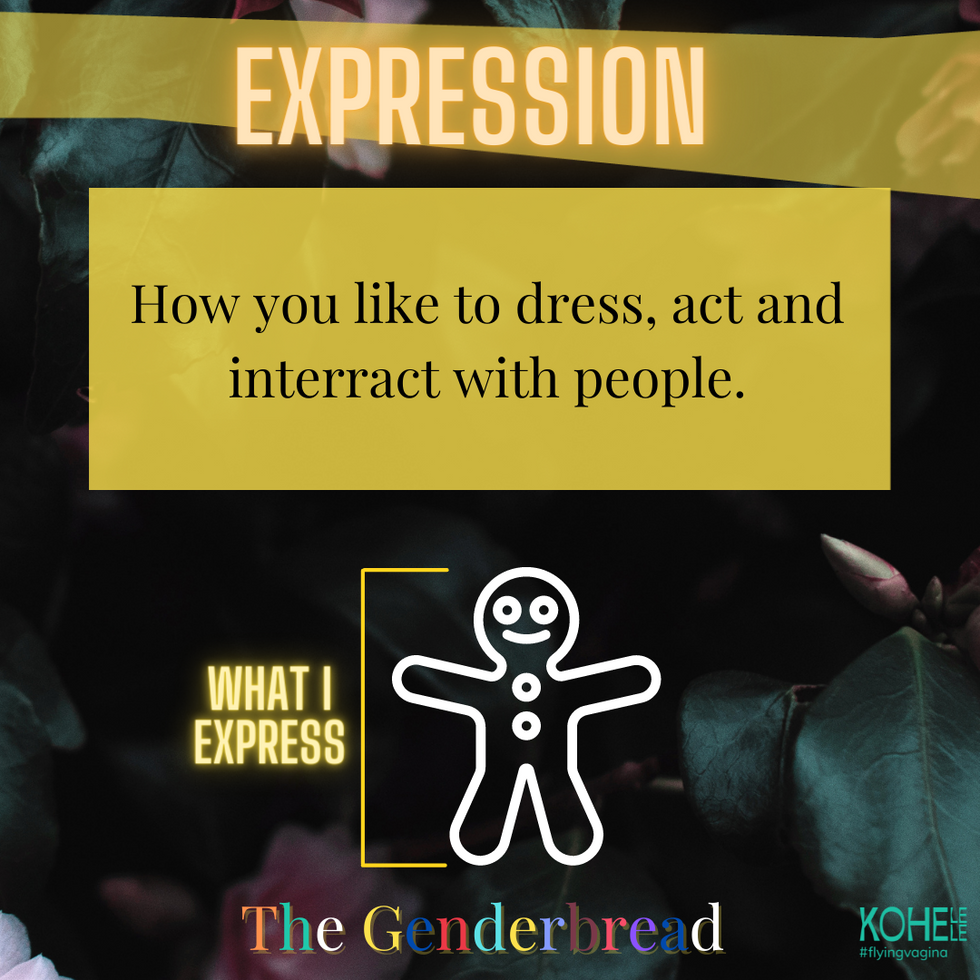All about gender identity🌈
- Camelia Brande

- Jun 24, 2020
- 3 min read
Updated: Oct 9, 2021
This month we are celebrating the LGBT community with PRIDE events, so let’s dive into some facts and explanations. Last week we talked about what LGBTQIA+ means and what types of sexual orientation exist. But what makes humans so special and unique, is their identification as a gender. What is gender identity and how many genders exist?
Let’s find out!
Bonus: Some cool flags for each gender identity!🏳️🌈

How is gender different from sex?
For a very long time the words “gender” and “sex” were interchangeable, describing the basic characteristics of individuals. When it comes to toilet signs, medical forms, questions for expecting parents, the answers would be “female” or “male”.
But research revealed that these two terms “gender” and “sex” have different meanings and they can be correlated, or not, depending on how an individual identifies itself.
What is sex?
“Sex” refers to the biological aspects of a human being, specifically to the genitalia of a male or female.
In some medical exceptions individuals can be born with characteristics from both sexes. They are called intersexuals and usually parents decide one of the two sexes after birth. Studies show that the majority of intersex patients develop a gender identity correlated with their sex on announcement.
What is gender?
“Gender” is a socially constructed concept, based on behavioral, social and psychological characteristics of individuals. So when discussing gender differences, we refer to the social behaviors associated with a gender.
Some studies even suggest that gender identity may be an ongoing process performed by an individual. Therefore, it is not always something acquired at an early stage of life but a continuous process due to certain behaviors and actions. Therefore, depending on the context, individuals may change their gender early in life or during it.
In 2013 a study about the population in Israel revealed that 25% of respondents felt they were identifying on a certain level to the “other” gender, “both” genders or “neither” gender. Of course, the figures are likely to be higher.
There are many types of gender identities, but today we will be focusing on the following ones.

Transgender
Transgender is a term used to describe individuals who identify themselves with a gender different than their biological sex. A transgender woman is someone who was assigned male at birth but identifies herself as a woman. A transgender man is someone who was assigned female at birth but identifies himself as a man.
Although most transgenders are heterosexuals, different sexual orientations such as homosexuality, bisexuality or asexuality are also common.
Some insights of transgender people:
“I used to play baseball and hangout with the boys, but I always felt like a girl.” (Anonymous)
“Since I was young, and I would see people getting married, I always pictured myself in the groom’s place instead of the bride’s.” (Anonymous)
“Since I can remember, I always thought I was a girl. I used to do things as a girl, sit on the toilet. I wouldn’t stand up. I never liked using urinals. I never liked boy things. I didn’t like boys’ stuff, I always liked girls’ stuff.” (Anonymous)

Cisgender
Cisgender refers to individuals whose gender identity matches their biological sex.
The term was first introduced during activist discourses in the 90s in order to support transgender people. Cisgender can be seen as a positive identification of a non-trans identity and including transgender as an equal category when categorizing genders.

Gender fluid
Gender fluid is a term by which individuals describe their gender identity as being flexible, modified over time or context, or even nonexistent. Therefore, one day they may identify as a woman and on another day as a man.
Some insights of gender fluid people:
“My gender changes. Sometimes I am female, sometimes I am a boy, sometimes I am both, and sometimes I am neither.” (Anonymous)
“My gender changes on a day to day basis.” (Anonymous)
“I slosh about between male, female, neither and both.” (Anonymous)

Non-binary
Until now, all gender identities explained present a binary system of genders, male and female. But a significant number of people do not identify themselves with any gender. They are represented by the non-binary terminology. Since they do not identify with any gender, when talking about themselves, the pronouns preferred are “they/their/them/themselves”.
Some insights of non-binary people:
“I don’t conform to the gender binary.” (Anonymous)
“I am beyond the binary genders and do not identify as either female or male.” (Anonymous)
“If there are two axes on a graph, one for how female a person feels, and another for how male they feel. I am very close to the coordinate (0,0). (Anonymous)

As the world is constantly changing and evolving, so is the concept of gender identity. No matter the gender, people need to be accepted and encouraged to express themselves. We are all human and deserve to love and be loved. ❤️💛💚💙💜
Stay tuned 🌺🐝!
Sources:
https://www.researchgate.net/publication/12424470_Intersexuality_and_gender_identity_differentiation
Ain't no Climax high enough!
Kohe Lele partnered up with 'Sexshop Heaveno7' in Amsterdam and created 100 educational boxes to re-discover the intimacy in your bedroom. Get your ClimaxBox here.















Comments